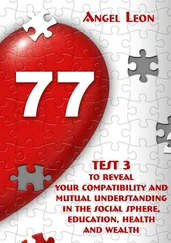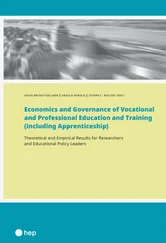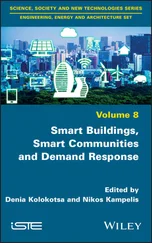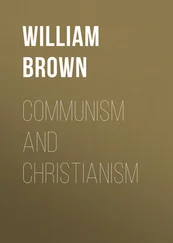Given that disasters are socially constructed and the role of at-risk people and their communities in disasters is critical, then learning by these people and their communities before, during, and after a disaster is paramount. This contention is supported by the Sendai Framework for Disaster Risk Reduction 2015–2030 (United Nations 2015), endorsed by countries across the world, which in several instances promotes the need for disaster-related learning in its actions, including ‘to promote national strategies to strengthen public education and awareness in disaster risk reduction, including disaster risk information and knowledge, through campaigns, social media and community mobilization, taking into account specific audiences and their needs’.
This book examines the nature of disaster learning and how it can be made most effective.
A major challenge in disaster-related learning is that in comparison to other forms of personal civic learning (e.g. road safety, health, waste management, financial management), a disaster (or even an emergency) may never occur in one's lifetime. On the other hand, people learn to manage money on a regular basis, to be constantly wary of road and other transport hazards, and to be aware of lifelong risks to their health.
1 Alexandra, T., Cannon, T., and Krüger, F. (2018). Uncovering ‘community’: challenging an elusive concept. Development and Disaster Related Work Societies 8: 71.
2 Bankoff, G., Frerks, G., and Hilhorst, D. (2007). Mapping Vulnerability: Disasters, Development and People. London: Earthscan.
3 Burton, I., Kates, R., and White, G. (1993). Environment as Hazard, 2e. New York: Guilford Press.
4 Centre for Research on the Epidemiology of Disasters (2018). Economic Losses, Poverty & Disasters 1998–2017. Report produced in conjunction with the United Nations Office for Disaster Risk Reduction.
5 Haque, C.E. & Etkin, D. (2012). Dealing with disaster risk and vulnerability: people, community and resilience perspectives. In: Disaster Risk and Vulnerability: Mitigation Through Mobilizing Communities and Partnerships, (eds C.E. Haque & D. Etkin), McGill-Queen's University Press. Montreal, Canada, 3–27.
6 Kelman, I. (2018). Lost for words amongst disaster risk science vocabulary? International Journal of Disaster Risk Science 9 (2): 281–291.
7 O'Keefe, P., Westgate, K., and Wisner, B. (1976). Taking the naturalness out of natural disasters. Nature 260: 566–567.
8 Oliver-Smith, A. (2005). Communities after catastrophe. In: Community Building in the Twenty-First Century (ed. S.E. Hyland), 25–44. Santa Fe, USA: School of American Research Press.
9 Tierney, K. (2014). The Social Roots of Risk: Producing Disasters, Promoting Resilience. Stanford, USA: Stanford University Press.
10 United Nations (2015). Sendai Framework for Disaster Risk Reduction 2015–2030. Available: https://www.unisdr.org/we/inform/publications/43291.
11 United Nations International Strategy for Disaster Reduction (2018). What is disaster risk reduction? [Online]. Available: https://www.unisdr.org/who-we-are/what-is-drr(accessed 11 June 2019).
12 United Nations Office for Disaster Risk Reduction (2017). Terminology on disaster risk reduction. [Online]. Available: https://www.unisdr.org/we/inform/terminology(accessed 11 June 2019).
13 Wisner, B., Blaikie, P., Cannon, T., and Davis, I. (2004). At Risk: Natural Hazards, People's Vulnerability and Disasters, 2e. New York: Routledge.
2 Disaster ECE
2.1 Disaster Education
2.1.1 Defining Disaster Education
Disaster education is becoming increasingly popular as a means of ensuring public safety, knowing that governments and infrastructure cannot protect all individuals and their communities in all emergencies. People need to look after themselves and others during and after disasters, and thus need to be educated in how to do this.
There is a strong involvement by emergency agencies around the world in disaster education. However, most agencies only commit relatively small proportions of their budgets to it, especially compared to those for emergency operations.
Ironically, although there are a multitude of avenues for education implementation related to disasters, there is according to Preston (2012) ‘surprisingly little writing in the field of education/pedagogy itself’. This is largely due to disaster education being a ‘new area of enquiry in the field of education’ (Preston 2012) and because many of the disaster education programmes are designed by non-educators from emergency agencies and other organisations. As a result, there is a large amount of disaster education activity around the world with little technical research into its educational veracity.
Furthermore, with technological developments such as social media, all people have the opportunity to be involved in disaster education. There is therefore a pressing need to examine disaster education in this context and provide robust education-based guidance to people using these emerging technologies for disaster education.
Preston (2012) notes that ‘the disciplinary boundaries of disaster education are fluid and the literature on the topic can be found within the sociology of disasters, public health and health promotion, humanitarian response, political communication and public relations’. Although more specific education-based research is required, it is useful that disaster education continues to draw upon and combine with other disciplines including education, psychology, and sociology in understanding people's reactions to disasters (see Chapter 5).
There are several definitions of disaster education that may lead to confusion about its place in disaster management. For example, Shaw et al. (2011) believe that ‘disaster education’, ‘disaster risk education’, and ‘disaster prevention education’ are ‘different expressions that essentially mean disaster risk reduction education’. Preston (2012) views disaster education more along the lines of preparedness: helping citizens ‘prepare for various disasters, consider what they would do in a disaster and think about how they would respond’.
An understanding of the meaning of the word ‘education’ will assist in resolving this confusion. Craft (1984) noted that there are two different Latin roots of the English word ‘education’. They are educare , which means to train or to mould, and educere , meaning to lead out. While the two meanings are quite different, they are both represented in the word ‘education’. They relate to different types of learning possible across education: one calls for rote memorisation and appropriate response; the other requires questioning, thinking, and creating.
Acknowledging this explanation and the Disaster Management Cycle ( Chapter 3), disaster education should ‘involve learning before, during, and after disasters’ (Dufty 2011). The design of disaster education involves two components which will be discussed in detail later in this book:
1 Content – what will be learnt (see Chapter 8).
2 Methods – how it will be learnt (see Chapter 9).
2.1.2 Modes of Disaster Education
The International Standard Classification of Education 2011 (United Nations Educational, Scientific and Cultural Organization 2012) identifies four modes of education that are all applicable to a study of disaster education:
1 Formal education. ‘Formal education is education that is institutionalised, intentional, and planned through public organisations and recognised private bodies, and – in their totality – constitute the formal education system of a country.’ For disaster education, this would include curriculum-based learning in schools and universities. ‘Programs that take place partly in the workplace may also be considered formal education if they lead to a qualification that is recognised by national education authorities (or equivalent).’
Читать дальше












